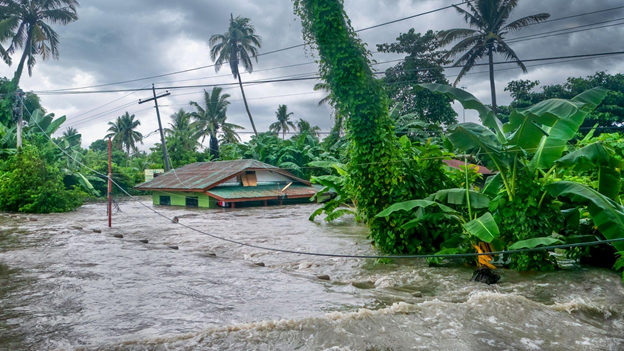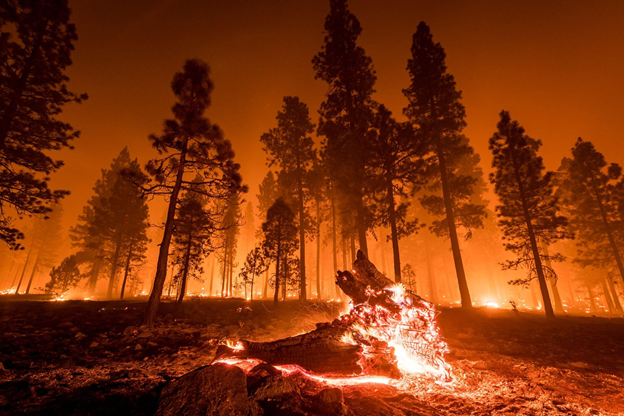Through continuous advancements in technologies like sensors, wireless connectivity, and AI-driven data analytics, IoT technology is changing with the way how we manage disasters.

Natural disasters have long plagued humanity, but as societies have developed, their impacts have become more devastating. Densely populated cities and intricate infrastructure have made recovery efforts more complex in modern times than in the past.
While our ancient ancestors had fewer material losses and simpler needs, today’s cities contain complex and vital systems such as transport networks, communication grids, and utilities that are vulnerable in the face of catastrophe. Even with the advancement in technology,, stopping some natural or man-made disasters remains a monumental challenge.
As a result, there is an increased global focus on cautiousness – whether by activating flood defenses to change the path of flood waters or by issuing early evacuation orders to move communities from harm.
In this landscape, outdoor Internet of Things (IoT) devices are emerging as crucial tools in aiding our understanding, preparation, mitigation, and recovery from a wide range of disasters.
Communities can now monitor environmental changes in real time by using AI-driven analytics and interconnected sensors that provide early warnings and enable faster and more accurate responses. This proactive approach is transforming how we manage natural disasters, allowing governments and organizations to protect lives, limit damage, and coordinate recovery efforts with unprecedented precisions.
Understanding The Diverse Disaster Landscape
When disasters strike, be it due to human activities or natural causes, the communities affected often suffer severe consequences, including loss of life, economic damage, and environmental destruction.
Accidents caused by human activity can vary significantly in terms of their causes and the way they propagate. While mitigating or preventing damage caused by armed conflicts or acts of terrorism is often beyond the capabilities of IoT technology, other disasters are not. Incidents involving transportation, industrial accidents, structural failures, oil spills, and fires often occur due to a systematic failure, in which a routine operation goes wrong, resulting in a disaster.
Storms, floods, droughts, wildfires, earthquakes (as depicted in Figure 1), volcanoes, and tsunamis are all naturally occurring events that can devastate the globe. Natural disasters in 2023 resulted in an estimated 95,000 deaths worldwide, with economic damages reaching around $380 billion.
Although it is virtually impossible to prevent natural events such as earthquakes and hurricanes, there is considerable interest in technology and strategies for disaster prevention and warning. The convergence of sensor-based IoT, wireless technologies, and analytics powered by Artificial Intelligence (AI) drive powerful new tools capable of reducing the disaster’s impact and recovery time.
These tools can revolutionize disaster management for both human-made and naturally occurring events. By enabling interconnected devices to collect and share data, they provide valuable insights that can inform decision-making processes.
Ensuring IoT Success in Outdoor Deployments
Outdoor IoT networks have the potential to aid disaster prevention, warning, and recovery, but their effectiveness is reliant on the performance of the underlying technologies.
The outdoor IoT deployments are driven by analysis, with speed and system intelligence being key requirements. AI and Machine Learning (ML) models are essential for processing large volumes of data generated by large IoT networks, offering predictive insights and disaster forewarning. Their proficiency in pattern recognition and anomaly detection, enable swift and accurate notifications to authorities and to the public. Depending on factors like security, latency, and storage, AI computations can be cloud-based or edge-located, with the latter beneficial for energy consumption.
Another important factor is the hardware that is chosen. Early warning systems for natural disasters like earthquakes and tsunamis rely on low-power sensors to detect changes in environmental conditions, including temperature, vibration, and air pressure. Likewise, in flood-prone areas, hydrostatic sensors can indicate when an area is at risk of flooding, while air quality sensors can help to mitigate human-caused incidents by monitoring dangerous substances or elevated air pollution levels.
Ensuring Device Longevity
Outdoor IoT networks not only need to be intelligent and accurate, but they must also be energy efficient and robust, as most networks rely on battery power and operate for long periods in remote or harsh environments without frequent maintenance.
While sensor selection and AI model design are crucial factors, so is the device’s power source. Advancements in battery composition are aiding IoT deployments by providing higher energy densities and allowing for longer lifespan in the field. Another important factor has been the reduction in the size of renewable power sources, such as solar, thermal, and vibration energy-harvesting systems. This has increased the operating lifespan of IoT nodes, which is especially critical for difficult-to-access nodes where frequent battery replacements would be dangerous.
IoT sensors that are used to perceive and relay imminent threats depend on communication. Therefore, it is critical to consider how data is transmitted to ensure accurate transmission and extend battery life.
For cloud-dependent IoT networks, advanced communication technologies like 5G can provide high data rates, low latency, and increased range over localized Wi-Fi, allowing complex information, including sound and video to be relayed accurately. Alternatively, LoRa® offers lower data rates but is more energy efficient, excelling in battery life, power usage, and cost, which is better suited to applications that need less frequent communication.
Highlighting the Benefit of Real-World Projects
IoT networks are having a significant impact across the globe, helping to improve our ability to navigate incoming disasters. For example, in Japan’s earthquake-prone regions, IoT-enabled early warning systems alert citizens to impending seismic activity, providing them with precious seconds to seek shelter. While in South Asia, flood monitoring systems have been trialed to predict rising water levels, helping vulnerable communities take necessary precautions.
The ALERTCalifornia public safety program in the United States, developed by the University of California San Diego, employs a combination of IoT sensors, cameras, drones, and AI to enhance the detection and monitoring of wildfires in California (Figure 1), enhancing early response capabilities.

ALERTCalifornia is the latest version of the HPWREN, which has been developing for around two decades in the US. Since the 2003 Cedar Fire, emergency managers have used real-time wildfire images from high-resolution motion-detection cameras and sensors installed in advance, proving the value of wireless technologies in wildfire management.
To ensure a comprehensive view of fire risk, the cameras pan, tilt, zoom, and perform 360-degree sweeps every two minutes, capturing 12 detailed frames per sweep. The cameras also feature near-infrared night vision capabilities to provide 24/7 coverage.
Drones equipped with scanners provide three-dimensional data of scanned surfaces, while lidar remote sensing aids ALERTCalifornia in analyzing fire-prone areas.
The entire system is underpinned by sophisticated AI models, which facilitate the fusion of complex data and the generation of powerful analytics. This helps both ongoing fire management and the strategy creation for preventing and managing wildfires in the future.
Leveraging IoT for Quicker Disaster Recovery
When hurricanes or floods strike, damaged cellular networks can create a communication blackout, making it challenging to carry out effective disaster recovery. In the wake of Hurricane Maria in Puerto Rico in 2017, temporary cellular devices were mobilized to bring back communication networks that were destroyed by the devastating storm. By using solar-powered sensors and satellite-connected communication hubs, temporary communication links were established, allowing emergency response teams to effectively coordinate relief efforts and reach isolated communities in need of assistance.
In their report on the 2017 Atlantic hurricane season, the GSMA highlighted the importance of adopting a more advanced early warning system. Furthermore, they highlighted the advantages of using the early warning system to activate collapsible network masts, reducing the height of the towers before the hurricane arrives. This proactive measure aims to prevent damage and streamline reconnection after the storm.
The increasing advancement of perception, communication, and analytic technologies will boost the importance of IoT in aiding recovery from disasters, whether caused by humans or nature. Through affordable and durable solutions, agencies can speed up the recovery of essential infrastructure, aid in crucial rescue operations, and gather valuable data for future prevention strategies like improved flood defenses or constructing earthquake-resistant buildings.
Conclusion
Preventing disasters and issuing early warnings demonstrate the positive impact of IoT. By combining robust, energy-efficient sensors, wireless connectivity, and AI-powered data analytics, authorities and first responders can now access real-time information that was previously unattainable.
As technology keeps evolving, these systems will grow more common and offer a deeper insight into our environment, contributing to disaster prevention and management, rescuing lives, reducing economic losses, and protecting the environment.
Courtesy: Mouser Electronics






